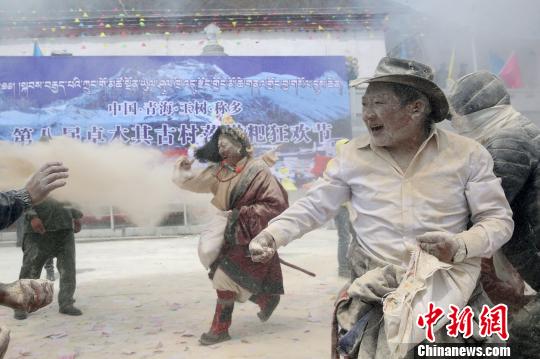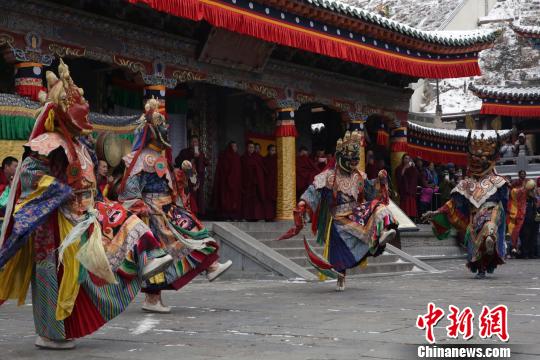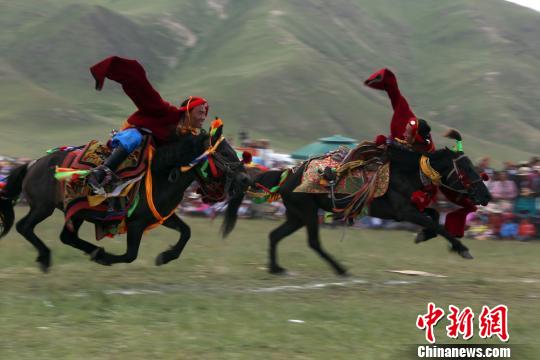More than 2 billion yuan invested in cultural industry corridor:Qinghai

Qinghai Yushu Tsampa Festival [Photo/China News Service]
More than 2 billion yuan (0.3 billion US dollars) has been invested in the Tibetan, Qiang, and Yi Cultural Industry Corridor by northwest China's Qinghai province with 17 cultural industry projects planned to implement, according to the Department of Culture and Press Publication of the province.

Cham dances performed at Ta'er Monastery, Qinghai [Photo/China News Service]
In 2014, China's Ministry of Culture and the Ministry of Finance jointly issued the General Plan for the Tibetan, Qiang, and Yi Cultural Industry Corridor, which would be implemented in Tibetan, Qiang, and Yi inhabited areas in Sichuan, Yunnan, Tibet, Shaanxi, Gansu, Qinghai, and Guizhou provinces. The planned area exceeds 700,000 square kilometers.
According to Kang Haimin, deputy director of the Department of Culture and Press Publication of Qinghai, the number of cultural enterprises in ethnic minority areas for the China Tibetan, Qiang, and Yi Cultural Industry Corridor (within Qinghai) has increased from the original 926 to 1,591, and the number of people involved has increased from 30,000 to 44,000.

Ice mani made by Tibetan people in Yushu, Qinghai [Photo/China News Service]
Exports of Qinghai Tibetan embroidery to the U.S., France, Japan, and other countries have earned 770,322 USD in foreign exchange. In 2017, an exhibition of Tibetan embroidery products titled "China Dream, Tibetan Embroidery" was held over three months in Nepal. This year, markets in the U.S., Europe, Japan, and Korea will be explored to promote Qinghai Tibetan embroidery around the world even further.

Qinghai Yushu Horse Racing Festival [Photo/China News Service]
To date, Qinghai has established the Regong Cultural and Ecological Reserve (located in Huangnan Tibetan Autonomous Prefecture), the Gesar Cultural and Ecological Reserve (located in Golog Tibetan Autonomous Prefecture), and the Tibetan Cultural and Ecological Reserve (Yushu). It has also established cultural industry areas for thangka, clay sculpture, embossed embroidery, stone carving, Tibetan embroidery, and ethnic clothing. In 2018, Qinghai Province will continue to promote the integrated development of cultural industries and manufacturing, architecture, information, tourism, agriculture, athletics, health, and other related industries.
Editor: Tommy Tan.
Your Comment
Name E-mailRelated News
-
;
Based in Lhasa, Tibet Vista is a Tibet travel agency that specialized in Tibet permit, and Tibet tours for both private and group travelers at a local price!
•4 Days Lhasa City Group Tour from USD 460 •8 Days Everest Base Camp Group Tour from USD 850 •15 Days Mt.Kailash Group Tour from USD 1780 •2016 Tibet Train Tours from Beijing, Shanghai, Chengdu, Xining,etc










